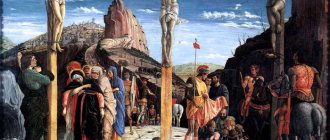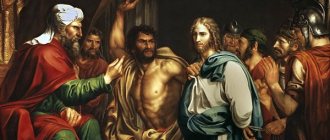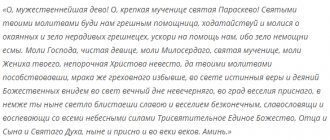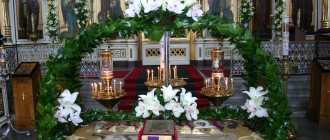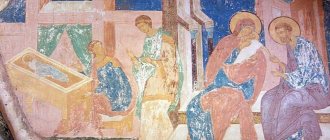Makosh is a female deity that has existed since the beginning of time, the spinner of destinies, the foremother of all living things, the race, the sacred feminine principle. Therefore, Makosh is the protector of all women: mothers, wives, women in labor, young girls. She was considered a Goddess who protects family ties, the patroness of women's crafts - weaving, spinning, embroidery. It was believed that Makosh helps those in whose hearts reign love, kindness, mercy, the desire to help, understand, know, but she could also turn away from those whose thoughts are wicked, who are mired in evil intentions and deeds. The goddess was revered and glorified, rituals were performed, and gifts were presented.
12 Makosh Fridays per year . The most important of them is the 10th Friday Makosh - the last Friday of October ( Makoshina Strecha ). Autumn Makoshya begins on the 9th Friday, on which women previously performed the full cycle of annual work - pulling flax, spinning, whitewashing and weaving the so-called. "ordinary swaddling clothes." At this time, the main field work was already completed, and the season of winter “evening parties” began.
Would you like to know more about Goddess Makosh?
Books
Selection
Ancient non-canonical apocrypha says that the 10th Friday, together with the 9th, brings requests to the Gods before other Fridays. The blessed week ended with the 10th Friday. It was on this day, which has special power and magic, that women made predictions for the future, told fortunes, and performed traditional magical rites and rituals addressed to Makosh.
What items are in this set?
- Mystical lunar altar.
Cardboard. Size 20*20 cm. This lunar altar is made of thick coated cardboard. If you are careful it will last you quite a long time. The drawing on it is applied typographically. Carry out the revival of Rez on it, and any other lunar rituals. - Chur of the Goddess Makosh
, made by laser printing on birch. Height 12.5 cm. Fastening: magnet. - Red rolled wax candle (length 8.5 cm, burning time 20 minutes), 1 pc.
- Salt dough cut with the sign of the Goddess Makosh.
This Reza is made from a material traditional for northern magic - salt dough. It can be used as a vercha gift or charmed as a konok amulet. Ultimately, it must be taken to nature. The cut is hard, but when left in nature, it breaks down into its original components. - The monstrance
is a plate (linden wood), painted with durable acrylic, bearing the traditional symbol of the Goddess Makosh. Plate size: diameter 70 mm. - A paper
with a step-by-step description of the ritual.
Origin and meaning of the amulet
The appearance of the amulet is usually an image of a goddess. If you look at it more closely, you can see a head, a female figure, and a skirt covering slender legs.
The Slavs sometimes depicted a divine figure with arms raised high. Such a talisman served as a magnet for wealth and prosperity. Our ancestors asked him for fertility and the health of livestock.
I recommend reading:
Types of Slavic amulets
Another type of amulet is Makosh with his hands lowered to the ground. This is a symbol of autumn - the season of nature withering and harvesting fruits.
Another well-known variant is a female head formed from four diamonds. Each of the figures is endowed with a unique sacred meaning:
- materialism;
- spirituality;
- conscience;
- consciousness.
Some sources say that rhombuses are symbols of natural elements. Such an amulet was usually worn around the neck, used as personal protection. The first two variants of the totem image were used in embroidery.
Amulet Makosh
The amulet doll Makosh is a female symbol. The sacred image of the goddess is used as a family protective sign. They decorated the clothes of all family members. When going hunting or on a long journey, men wore shirts with protective embroidery.
The Makosh amulet is not universal; its energy is exclusively feminine. Men can use it only in certain cases - for example, when they are away from home.
The wife cannot surround her husband with care, then she gives him a magic symbol. This is also a good support for men working on the land - combine operators, tractor drivers, farmers.
The heavenly patroness supported everyone who turned to her in prayer. She helped to find true love, build personal happiness, and deal with everyday problems. Together with the magic figurine, harmony settled in the house.
The protective sign is suitable for young girls who have not yet met their loved one, and for mature women who have started a family and given birth to children. Every household activity will seem easy if you do it together with Mother Earth. The main thing is to treat her with respect - don’t forget to always thank her.
Goddess Makosh
Many people confuse two Slavic goddesses - Makosh and Lada. They are somewhat similar to each other, but there are still differences. For example, Lada patronizes little girls and young unmarried girls. She gives guidance and reveals opportunities to them. But the Mokosh symbol is more suitable for adult women who are serious and ready to devote themselves to family and home life.
What is the purpose of the totem talisman:
- he supports all attempts to find his true love;
- helps preserve feelings for life;
- has a beneficial effect on women's health;
- teaches you to be a good wife and mother;
- improves relationships between mother and children;
- strengthens the marital bond;
- helps with household chores;
- attracts prosperity and wealth.
What are the features of this ritual?
This is a simple and inspiring ritual when you pronounce praise to Her, the Goddess Makosh, thanking for the good events in life that She gives to us all, your family, and yourself. The second part of such a ritual, if desired, can be an agreement to fulfill your aspirations, and a charm of a talisman (or konok) that will help you with this. The ritual itself bestows a flow of health, strength, and prosperity.
- The goddess who controls the Fates of People and Gods, Goddess Makosh.
- Type of ritual: glorification and receiving blessings for a good life, fulfillment of a clear aspiration.
- Time of the ritual: this ritual is best performed in the morning, before noon; it is good to do in the light season to receive the Highest Good, and to do in the dark season to maintain strength.
- How to do it: The ritual is done on the altar, in front of the image of the Goddess Makosh; a salt cut is offered as a gift and words of gratitude are spoken. We take the cut out to Nature within 24 hours.
- If you want to ask this wise Goddess about your aspirations, you speak to Reza with her sign. Reza for nine days requires your attention, which consists of a daily mental appeal to the Goddess of Fate and Magic with confirmation of the agreement. After forty days, you give Reza as a gift and leave her in nature.
- Instead of Reza, you can cast a magic item (amulet, konok, amulet, apotropaia) - then think in advance what exactly you want to cast (such an item is not included in the set).
- The purpose of the ritual: to express love and respect for the Higher Powers and receive a blessing for a good life.
Types of amulet
Most often, the Makosh amulet was found in the form of embroidery; perhaps there was not a single house where a handbrake (towel) with amulet embroidery did not hang. In addition, embroidery was found on elements of clothing. They made jewelry with secret signs from birch, silver, and stones.
Embroidery
Such embroidery was done only on a waxing or full moon in order to receive protection and attract good luck and prosperity. The craftswomen embroidered an image of their patroness surrounded by obligatory attributes. To increase strength during work, a conspiracy was pronounced.
Rune
Bereginya Rune
Each of the Slavic runes was attributed a special meaning, for example, the Bereginya rune was identified with Makosh. It was often used in magical rituals to communicate with a deity; in this case, the rune was combined with chir, which was drawn with flour or salt on the work surface.
Magical and protective powers were received by those who drew the rune of the Goddess of Fate on a pendant made of wood or bone, so that the rune would always be in the correct position. When turned upside down, it became a symbol of death and could attract negative energy to the owner.
Tattoo
The ancient Slavs did not particularly welcome drawings on the body, but if a woman was pregnant, she often drew a protective sign “sown field” on the inside of her wrist. This meant that the mother and unborn child were protected so that the pregnancy and birth would go smoothly.
Important! You can also try to enlist her support. The design can be applied using henna, and then updated periodically
Decorations
The makosh symbol is often used in jewelry. As a rule, these are women's jewelry: rings, pendants and earrings. In addition to their magical powers, such accessories also look very original and stylish.
Doll
Doll Makosh
A doll was often made as a talisman, which served as protection for the house from negativity. You can repeat the ritual of making the amulet. You need to do this in a positive mood so that you can focus on the process and you need to do this only on a waxing or full moon. You will need a regular rope made of undyed linen, 35 cm long.
Step-by-step instructions on how to make a Makosh doll:
- Unravel the rope into threads;
- Divide the threads into three equal parts, set one aside for now;
- Connect the two remaining parts together and tie a knot in the middle. This will be the doll's head, so do not tighten the knot too much so that there is volume left;
- Braid a braid from one part of the threads to create a head with a braid;
- Take the rest of the threads and braid the braid about halfway;
- Let's move on to shaping the hands. An already braided braid will become one of the arms, but in order to move on to weaving the next one, they need to be fixed on the body. To do this, place the braid on one side of the body, then place one part of the braid in front of the doll, with the threads going to the neck area. Place the two remaining ends of the threads behind your neck;
- Next weave the second hand;
- You need to tie knots at the ends of the handles;
- The doll is ready.
If desired, you can make a shirt from the braid, but you cannot use a needle. Some craftswomen make an apron with embroidery.
On the Internet you can find descriptions where they recommend tying the ends of the arms to the sides so that the doll is in the “arms to the side” pose. But it’s better to leave your hands at your sides.
Idol
Kummir Makoshi
The Makosh amulet is also made in the form of an idol, a kummir - a wooden figurine. In the old days, the Slavs had such idols at every well. Now, as a rule, it is placed in a specially designated area of the house - the red corner. The figurine is most often made from clay or high-quality wood, covered with wax and oils. With proper care and proper use, a family heirloom can serve for many years.
What effort should be put into this ritual?
In addition to your great aspirations and the items of this set, you need to prepare gifts and some ritual items that are needed for the rituals in general. Gifts to the Divine Power of the Ancestors (buns, boiled eggs, grains, milk, stones, one thing or another). Pledge/Vow: You must make and keep a pledge (a commitment not to do something) or a vow (a commitment to do something). This deed must be good, it can concern the person making the pledge or vow, the nature around him, people, society. Tool for a protective circle: placing a protective circle (magic circle, horo, protective circle) means performing a traditional magical action designed to protect the Knower during rituals of fortune telling and magic; it is done so that it includes the altar, all the instruments used, and all the people present at the ceremony. It involves drawing a line around the place of divination before the ritual three times, starting from the east, salting with the help of a peasant’s knife, a rod or a spindle, or chalk, salt, or grass; when chalk, salt, grass are used, the circle is made on the floor (or ground); when a circle is drawn with a knife, wand or spindle, the circle is drawn in the air. Items for the protective circle can be viewed in our shop here. Protective amulets: bracelets on both wrists, a pendant, preferably a belt and a necklace. For this ritual, you can use protection without metal, as well as stronger protection with the presence of metal. Simple protective omulets for rituals can be viewed here. You can view omulets with metal here.
Who should wear it and why?
The symbols of Mokosh tattoos are suitable for modern girls and women, but for men there is no need to apply the symbol of a female goddess to the body. A man is not prohibited from using the amulet, but it is advisable to wear it temporarily, during sowing and harvesting. The Makosh talisman will be useful only to farmers and representatives of other professions related to agriculture.
Women are not recommended to display their body amulet. Tattoos should be done in places hidden by clothing. The Slavs often chose the most vulnerable parts of the body for protective tattoos - the wrist, forearm, and if a girl dreamed of procreation, the body amulet was placed on the stomach.
For a tattoo, it is better to choose the Mokosh symbol in the form of a rhombus or the Bereginya rune. These Slavic drawings are suitable for any woman, but the amulet will have the greatest effect on those who want to find their soulmate. But for career women, it’s better to choose a different design for a tattoo. Makosh patronizes women who put family values first.
If a woman valued her husband and was afraid of losing her family, the body amulet would instruct the girl, make her wise and attractive. The meaning of the drawing has not changed for contemporaries either; the deity gives faithful wives self-confidence and tells them how to make the union strong. For young girls with the gift of intuition, a body amulet is an assistant that enhances this ability. The Slavs knew Makosh as the goddess of witchcraft.
About the Goddess Makosh
Makosh is the Goddess of Fate and Magic, so unlike the other Gods that she has no partner. Makosh weaves the destinies of people and Gods. No single word is capable of conveying the full complexity of the Goddess as a human person, but the word “knowing, in charge” involuntarily suggests itself. The spindle spins and hums, the tow in the spinning wheel decreases, the thread is wound into a ball. Only Makosh knows the secret of destinies, the secret of previous lives and new incarnations. Both Gods and people obey her commands.
Makosh is the goddess of women's destiny, women's work, and the women's part of the household in general. She strictly ensures that women follow all the rules of behavior, work, and household chores, and punishes sluts. She has one more important concern - Makosh patronizes marriages and protects the strength of family foundations. Makosh is a woman and therefore changeable - she can bring both joy and sorrow.
But she is not only a female Goddess. Makosh can return a happy share to a guy who has proven that his misfortunes have not bent him, but he demands that the person follow the predetermined path of Rule, and does not approve of deviation towards evil.
All destinies are in Mokosh’s hands: the bright Goddess has mercy and rewards only those who are strong in spirit and who fight for happiness. It shows a way out of the most hopeless situations, be it the loss of one person’s happy destiny or a remedy for a black love spell that has affected many people.
As the Ruler of Reveal, Goddess Makosh protects people from August 2 to October 31, transferring power to Goddess Morena for a long three months.
Disputes of the gods
People in ancient times endowed the celestials with their own ideas about good and evil. This is clearly noticeable when studying Greek mythology. It is interesting to observe the actions of the gods from the point of view of the current, by no means perfect morality
Just the deprivation of Tiresias’ vision - just think, he admired the beauty of his uniquely young and beautiful body! Even ancient people believed that the gods fought for their attention. So, the celestials argued about who the main city of ancient Greece would be named after.
They staged a kind of competition. In it, Minerva confronted Poseidon. They were judged by twelve deities led by Zeus. Poseidon is credited with creating the horse. According to other sources, he created a salty spring in the rocks with a blow of a trident. Minerva gave the people olive groves. They turned out to be more valuable in the eyes of people. The city was named after her - Athens.

